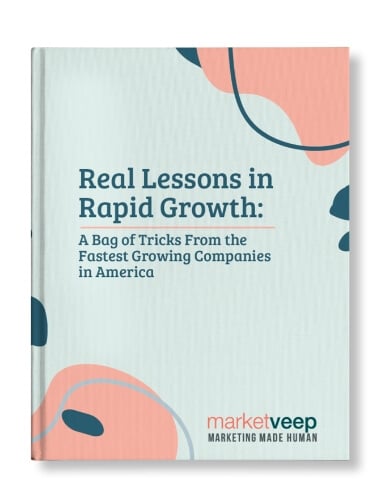SEO Attributes Your Website is Missing


By Market Veep
Not every business is aware that they are missing important SEO attributes on their website. Adding these attributes and updating your SEO strategy can help you speak better to today's search algorithms and rank better in search engine results.
Search engine optimization (SEO) is a very important part of your digital marketing strategy, as it contributes to the organic traffic you regularly receive on your website. Organic traffic (traffic that comes from search results) drives 51% of all visitors to websites. In today’s competitive online world, a small difference in your SEO best practices could make a huge difference for your business by increasing your search engine rankings.
We’d like to share some of the SEO attributes and strategies your website might be missing. Hopefully, when you make these changes, you can finally outrank your long-time competitors and build a continual flow of organic traffic to your website.



Let’s take a look at each attribute by following the general HTML page structure, shall we?
Tags You Need To Have Between <head></head>
SEO Meta Information:
Meta tags are snippets that describe the page’s content so search engines can have an idea about what the page is all about. With this info, search engines can respond to a targeted search query by serving up your website!
Title:
The title tag appears between the head tags. It is one of the most important parts of your SEO strategy as it is the first thing that appears in snippets on a search engine results page (SERP).
You might want to include the keyword you are targeting in the title tag. But don’t bloat it, as Google generally only displays the first 50–60 characters of the title tag.

Example of a title tag in action:
<head><title>HubSpot | Inbound Marketing, Sales, and Service Software</title></head>
Description:
A meta description is an element that summarizes the content of a page. It generally appears beneath the page headline and the URL on a search engine results page. You might want to keep your description between 155-160 characters if you’d like to avoid truncation (the search engine snipping off the end of your description).
Google truncates descriptions longer than 160 characters, but it still reads the entire meta description tag when it crawls the page. If you need to create a meta description that is longer than 160 characters, it’s still okay. Just try to keep the target keywords within the 160-character range.

Example of a meta description tag in action:
<head><meta name="description" content=“HubSpot offers a full platform of marketing, sales, customer service, and CRM software — plus the methodology, resources, and support — to help businesses grow better. Get started with free tools, and upgrade as you grow.”></head>
Robots:
Some people think robots tags are too technical if you aren’t a developer, but understanding how to use them is extremely important to your SEO strategy. Ignoring what’s listed on your robots.txt (also known as “robots exclusion standard” or “robots exclusion protocol”) could ruin your next marketing campaign, especially if you’re using landing and thank you pages.
So, if you don’t have an experienced developer within shouting distance, keep reading.
Basically, your meta robots tags tell search engines what and what not to index. There are 3 types of robots tags:
- Noindex: Search engines can crawl pages with noindex tags, but they won’t show in search results.
- Disallow: Search engines won’t crawl these pages, therefore they won’t show in search results.
- Nofollow: Search engines won’t follow the links on the page.
One of the most important use cases related to robots tags are thank you pages (the page a visitor goes to after they fill out a form on a landing page).
Let’s say you have a content offer and users are being redirected to a thank you page to download the offer after filling out a contact form. If you forget to use either noindex or disallow tags, search engines might find the content on the thank you page more relevant than that of the landing page and rank the thank you page higher in search results.
That means anyone who finds the thank you page can download your content offer without filling out a form. While it’s awfully nice of you to give away stuff for free, you won’t get any conversions on that content offer. Remember, you have to add robots tags to your thank you pages yourself, so don’t publish a thank you page unless you know the right tags are implemented.
To edit your robots.txt, simply find it in the root directory of your website. You can also add robots tags at the page level in between <head></head>.
In case you were wondering, “robots” refers to the crawlers that search engines send across the web to identify pages.
Example of a robots tag in action:
<head><meta name="robots" content=“noindex, disallow, nofollow”></head>
Keyword:
In 2009, Google officially stopped reading the keyword tag as part of its ranking system as it was too easy to exploit. So, stuffing keywords into a keyword tag is not a good practice.
If you’re still hedging on the power of that keyword tag, you should focus your SEO tactics elsewhere.
Canonical:
Use canonical tags on a page if you have an exact copy of that page’s content elsewhere on your website. This tag will tell search engines that that page is the master copy and all others shouldn’t be crawled. This way, you don’t have to worry about Google penalizing you for duplicate content issues.
Even if you don’t have duplicate page, or even similar page, on your website, Google recommends creating self-referencing canonical tags for all of your pages anyway.
Example of a canonical tag in action:
<head><link rel="canonical" href="http://example.com/preferredVersion/" />
</head>
Tags You Need To Have Between <body></body>
H1 Tag:
The H1 tag is maybe the most important tag you can have on a page. Sometimes, you can see a jump in your search ranking by just optimizing the H1 tag. Seriously, search engines love them some H1.
One of the most common mistakes is made by clueless bloggers who use multiple H1 tags on a single page just because subheadings look bigger and prettier than with an H2 tag.
You should only have one H1 tag per page.
Try to include the keyword you are targeting within the H1, if possible. Some content management systems will automatically tag a blog or page title with an H1 tag.
Example of an H1 tag in action:
<h1>This is heading 1</h1>
Alt Tag:
Alt tags aren’t just beneficial for your search rankings when optimized properly. They are also an important step in making your website more accessible.
Alt tags originated from the movement toward accessible web design. Their actual purpose is to describe images to users who are unable to see them, such as people with disabilities who rely on screen reading technology to navigate the internet.
If you don’t have alt tags on your images, it can impact your search rankings drastically. In the past, some believed alt tags were an opportunity to optimize for keywords. But in most cases, you shouldn’t use alt tags to keyword stuffing opportunity.
If a keyword makes sense in your alt tag, that’s fine. But try to keep them simple and relevant by describing the image.
For example, if one of your blog posts contains an image of a canoe on a lake, and alt tag like, “canoe floating on a lake” will suffice.

Example alt tag in action:
<img src=“/market-veep.png” alt=“Market Veep Logo”>
Internal Linking:
Admittedly, backlinks take up a big portion of any SEO strategy and can have an enormous impact on how you rank in search results. Still, that doesn’t mean you should ignore internal links.
By using relevant internal links in your pages and posts, you can increase conversion opportunities by redirecting users to more content that’s relevant to them. You’ll also spread page authority to your internal pages.
External links are also important, but since you want to keep people on your website, they are best used when linking to your partner’s sites, when citing statements and data on your pages and blog posts, or when linking to other sites you think your visitors will find necessary or important for understanding what’s on your page.
Strategies That Increase Your Website’s Google Indexability
It wouldn’t be fair to ignore one of the most important tools you can have in your SEO arsenal: Google Search Console.
Not only does it literally allow you to command Googlebot, it also provides you with valuable metrics and insights about your website that you just can’t get anywhere else.
After your sitemap is ready to go, you should submit it to Google Search Console instead of allowing Googlebot to index your pages randomly. It will also check your website for any broken links and do general site indexing.
You will receive messages directly from Google regarding any issues with, or actions taken against, your website. Not to mention that Google Search Console provides you with priceless information, like your exact keyword rankings, so you can see where your website stands against your competitors.
You may not like the fact that your website ranks only by the mercy of Google’s search algorithms, but such is the internet we live in.
Don’t panic.
With these SEO attributes and strategies deployed across your website in a standardized way, you can focus more on creating excellent content on your blog and publishing helpful web pages for your visitors.
At the end of the day, these are the most important steps to reaching that coveted first page in Google search results. Web pages and blog posts that get shared, linked to, and commented on will increase your domain authority and bring more traffic to your website.
Get The Latest From
Market Veep
RELATED ARTICLES

Master Sales Funnel Strategies: Tofu Mofu Bofu!
Between SEO, SEM, and SERPS, we’re always finding clever ways to break down concepts into four...

Why B2B Demand Generation Strategies Work
The sparkly, PR rep cousin of lead generation, this approach is all about growing your audience by...

Key Marketing Strategies for Robotics Manufacturers
In fact, experts project that the U.S. Robotics market is on track to pull in $7.85 billion in 2024...

Get Growing!
Download our eBook and get advice from 8 CEOs of Inc. 5000 companies in their own words.

GREAT MARKETING PARTNER
Market Veep is a great firm that handles all of our marketing efforts. This is the second time that I have used the firm. I highly recommend Market Veep!

Cres F.

EXCEPTIONAL EXPERIENCE
Market Veep's Onboarding Experts in Inbound Marketing are an absolute game-changer! From the get-go, their approach was top-notch. Market Veep's team has undoubtedly set the bar high for excellence in inbound marketing. Five stars aren't enough to commend their outstanding service!

Matthew W.

BEST PARTNER EVER!
As a growing business, setting up our first-ever HubSpot account was a crucial step towards enhancing our marketing and customer management strategies. From the moment we contacted MarketVeep, their team demonstrated professionalism, expertise, and a genuine desire to help us succeed. Overall, our experience with MarketVeep was exceptional, and we couldn't be happier with the results. Thanks to their guidance, we are now utilizing HubSpot to its fullest potential, streamlining our marketing efforts, and nurturing leads more effectively.

Jean M.

SET UP FOR SUCCESS!
We had an exceptional experience with Market Veep! Their team is professional, super organized, and friendly, and I truly enjoyed working with them. They executed on time and made the process super easy with their organization and documentation. In addition, they provided additional guidance and answered my many questions as I was new to HubSpot, and provided documentation resources for future use. We're now set up to leverage all that HubSpot marketing has to offer, and we couldn't have done it without Market Veep's expertise.

Bailey G.

OUTSTANDING WORK
There aren't enough words to describe the outstanding, professional work MarketVeep has provided to our company. From start to finish, the website design/development team at MarketVeep assigned to our project was extremely knowledgable, respectful, efficient and timely. The results went above and beyond our expectations and we could not be more thrilled with the improvements to the user experience on our website! Bravo MarketVeep, we'll absolutely be back with more projects!

Nadine B.

5 STARS FOR MARKET VEEP!
We had a fantastic experience with Market Veep! Their expert team seamlessly guided us through implementing HubSpot and provided comprehensive training across Sales, Service, and Marketing Hubs. Their knowledge and support significantly enhanced our workflow and overall efficiency. Highly recommend Market Veep for top-notch HubSpot solutions!

Anneke C.







